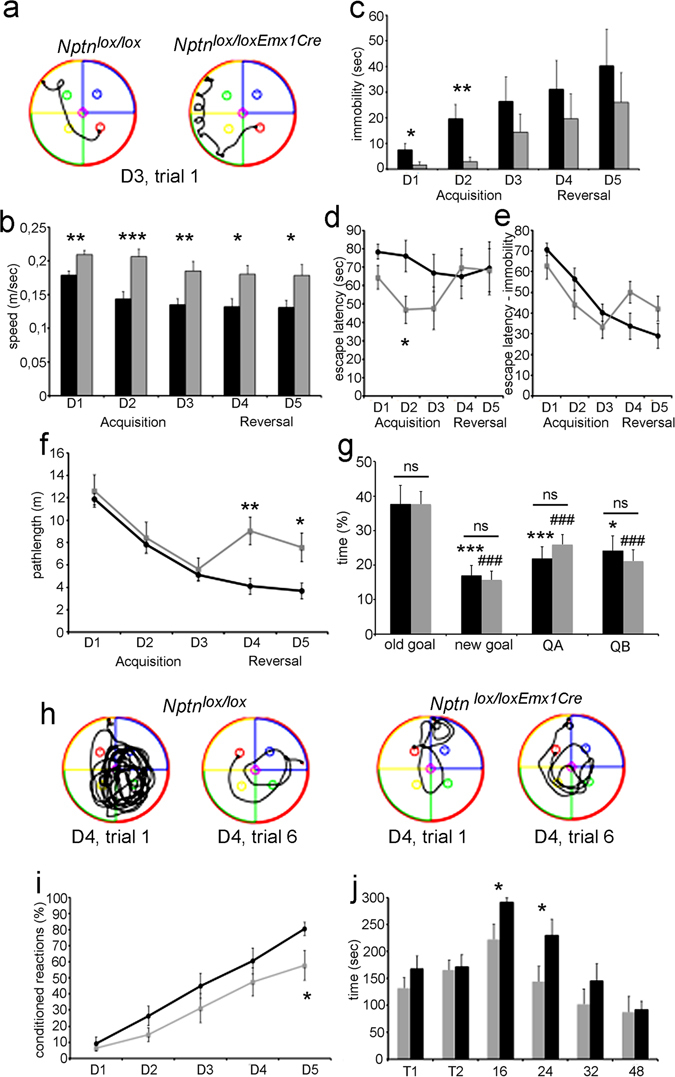Figure 2.

Behavioral deficits in Nptn lox/loxEmx1Cre mice. Nptn lox/loxEmx1Cre (n = 11, black bars and lines) and Nptn lox/lox (n = 12, grey) mice were examined (a–h) in the water maze, (i) in the shuttle box, (j) and on the rota-rod. (a) Representative examples of tracks recorded during acquisition (day3, 1st trial) showing frequent re-initiation of swimming by Nptn lox/loxEmx1Cre mice. (b) Average speed, (c) times of immobility, (d) escape latency, (e) escape latency corrected for times of immobility, and (f) path length are displayed. (g) Quadrant preference during the first 2 trials after platform reversal at day 4. QA, QB quadrants without platform. The old goal quadrant was significantly preferred compared to the other quadrants irrespective of the genotype of the mice. (h) Representative examples of tracks recorded immediately (day4, trial1) after platform reversal and after training (day4, trial6) for the new platform position. Nptn lox/lox mice initially persist on the old goal (trial1) and develop quickly a new spatial strategy (trial 6), whereas Nptn lox/loxEmx1Cre mice display a serial circular strategy. (i) The percentage of conditioned reactions in the shuttle box two-way active avoidance paradigm, (j) and the time staying on the rota-rod are displayed. Data are mean ± SEM. One-way ANOVA, one, two, and three asterisks indicate P < 0.05, P < 0.01, and P < 0.001, respectively, three # indicate P < 0.001.
